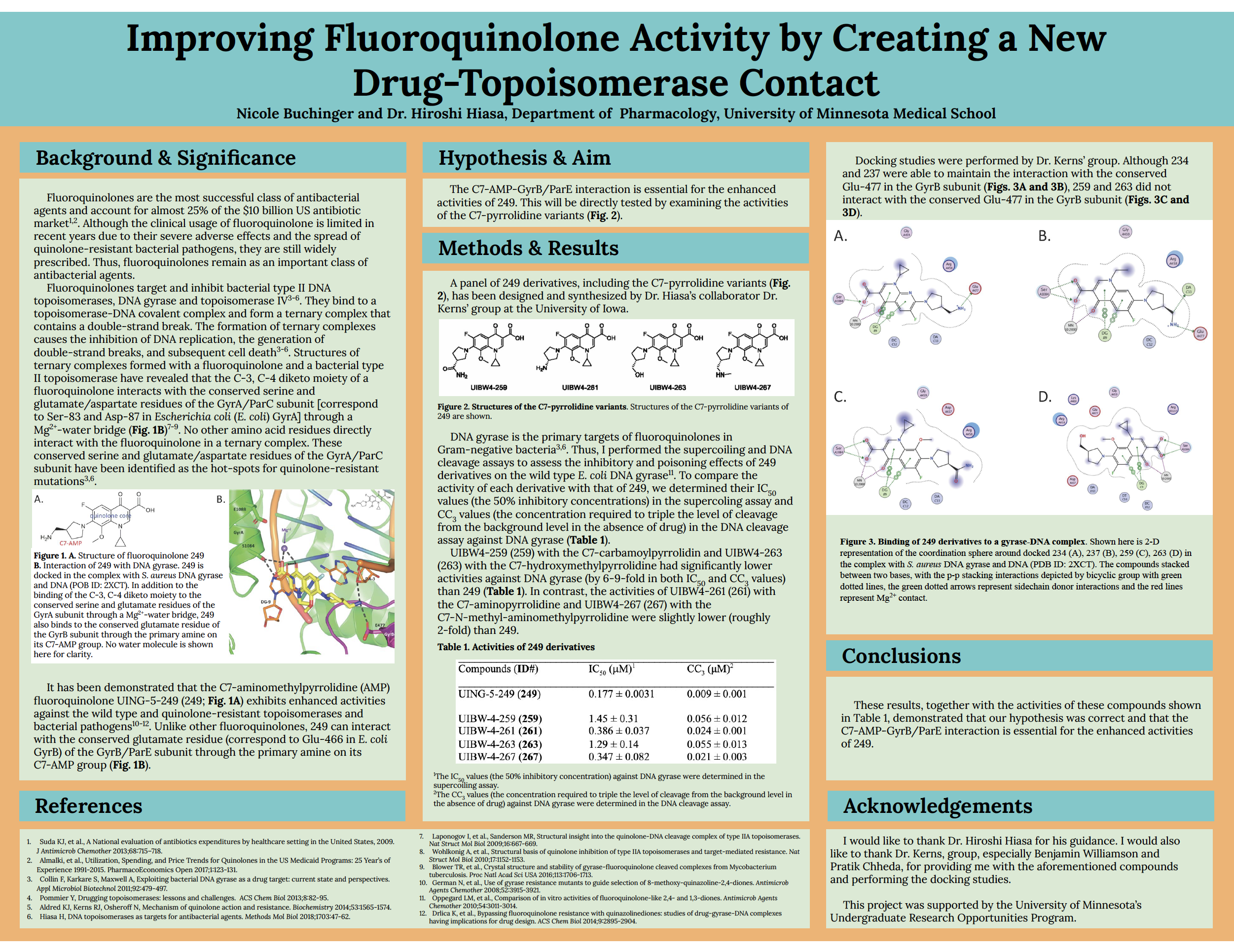Improving Fluoroquinolone Activity by Creating a New Drug-Topoisomerase Contact
Fluoroquinolones target and inhibit bacterial type II DNA topoisomerases, DNA gyrase and topoisomerase IV. Structures of ternary complexes formed with a fluoroquinolone and a bacterial type II topoisomerase have revealed that the C-3, C-4 diketo moiety of a fluoroquinolone interacts with the conserved serine and glutamate/aspartate residues of the GyrA/ParC subunit [correspond to Ser-83 and Asp-87 in Escherichia coli (E. coli) GyrA] through a Mg2+-water bridge. These conserved serine and glutamate/aspartate residues of the GyrA/ParC subunit have been identified as the hot-spots for quinolone-resistant mutations. Unlike other fluoroquinolones, 249 can interact with the conserved glutamate residue (correspond to Glu-466 in E. coli GyrB) of the GyrB/ParE subunit through the primary amine on its C7-AMP group. The enhanced activities of 249 is attributed to the C7-AMP-GyrB/ParE interaction, which may lessen the effects of quinolone-resistant mutations at the conserved serine and glutamate/aspartate residues in the GyrA/ParC subunit. Topoisomerase assays are conducted to measure the activities of C7-AMP analogs and compare their activities with those of parent fluoroquinolones, and a structure-activity relationship study of C7-AMP fluoroquinolones is performed by analyzing the data of 249 other derivatives. This work assesses the activities of these C7-AMP analogs and examines if the introduction of C7-AMP group would improve the activities of fluoroquinolones.
